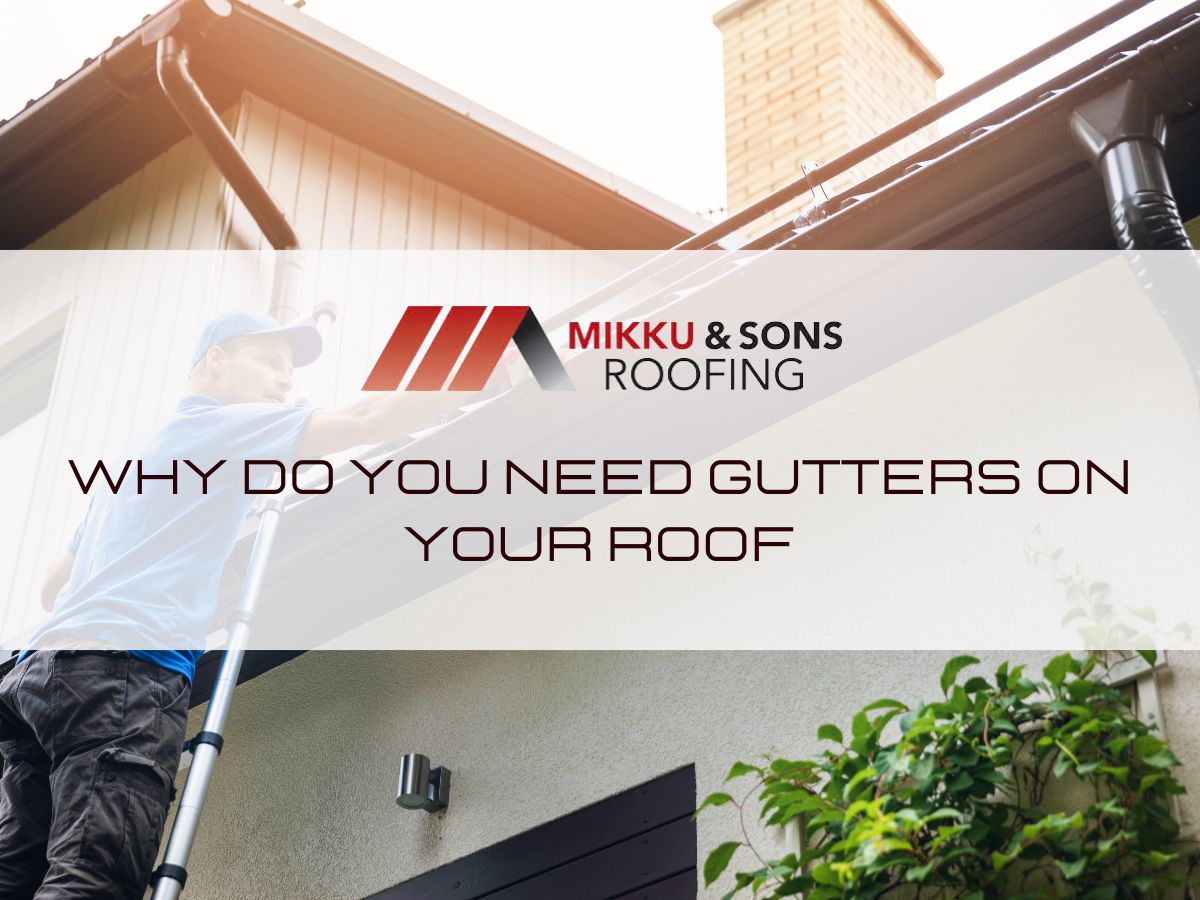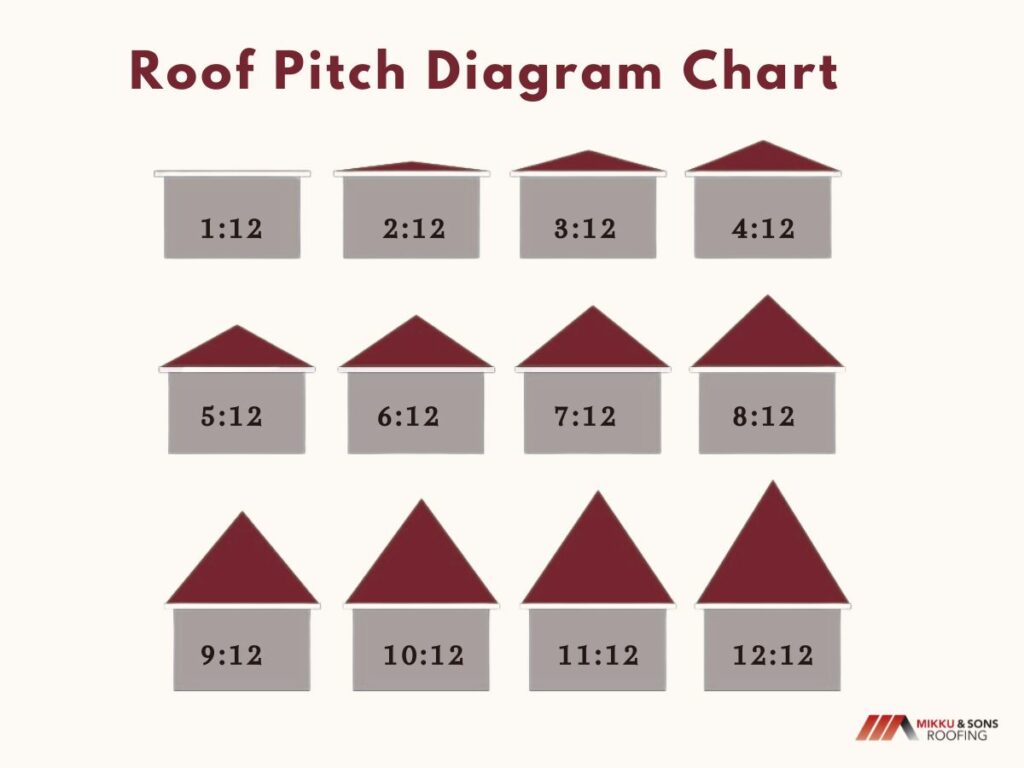

Roof pitch might seem like a technical aspect of home construction that's easily overlooked, but its significance cannot be overstated. Imagine your roof as the first line of defense against the elements, shielding your home from rain, snow, wind, and everything in between.
Now, consider that the angle at which this protective barrier is inclined can profoundly impact its performance and your overall living experience. Whether you're building a new home, renovating an existing one, or simply curious about the dynamics of roof design, grasping the fundamentals of roof pitch is essential.
It's about more than just aesthetics; it's about functionality, durability, energy efficiency, and even cost-effectiveness . We will now see how roof pitch can affect your home.

At its core, roof pitch refers to the steepness or slope of the roof, typically expressed as a ratio of vertical rise to horizontal run. This ratio determines how quickly water and other elements will shed off the roof's surface, impacting its ability to protect your home from moisture and weather damage.
Roof pitch is a key factor in roof design and construction, influencing everything from material selection to attic space and drainage.
Roof pitch is calculated by measuring the vertical rise in inches for every 12 inches of horizontal run. For example, a roof with a pitch of 6:12 means that for every 12 inches of horizontal distance, the roof rises 6 inches vertically.
This ratio can also be expressed as a degree measurement, with a 6:12 pitch equating to approximately 26.57 degrees. Roof pitch can vary widely depending on architectural style, climate considerations, and personal preference.
Common roof pitches range from shallow to steep, with each offering unique advantages and considerations.
Roof pitch is closely tied to the architectural style of a home, with different roof profiles offering distinct visual appeal and functional characteristics.

| Roof Pitch (Ratio) | Roof Pitch (Degrees) | Roof Profile |
| 1:12 | 4.76° | Flat Roof |
| 2:12 | 9.46° | Flat or Low-Pitch |
| 3:12 | 14.04° | Low-Pitch |
| 4:12 | 18.43° | Low-Pitch or Moderate |
| 5:12 | 22.62° | Moderate |
| 6:12 | 26.57° | Moderate or Gable |
| 7:12 | 30.26° | Gable |
| 8:12 | 33.69° | Gable or Steep |
| 9:12 | 36.87° | Steep |
| 10:12 | 39.81° | Steep |
| 11:12 | 42.51° | Steep |
| 12:12 | 45.00° | Steep or Gable |
| 14:12 | 50.19° | Steep |
| 16:12 | 53.13° | Steep |
| 18:12 | 56.31° | Steep |
| 20:12 | 58.43° | Steep |
Common pitches for gable roofs typically range from 4:12 to 12:12. The lower end of the pitch spectrum offers a more subtle slope, providing a modern aesthetic while still allowing for effective water drainage.
Steeper pitches, such as 8:12 or 10:12, are ideal for regions with heavy rainfall or snowfall, ensuring efficient water shedding and minimizing the risk of leaks. The pitch of a gable roof plays a crucial role in determining its overall appearance, durability, and resistance to weather elements.
Hip roofs commonly feature pitches ranging from 4:12 to 6:12. This moderate pitch strikes a balance between water drainage and structural stability, making it suitable for various architectural styles and climates.
The uniform slope on all sides of a hip roof provides increased resistance to wind uplift and creates a visually pleasing silhouette. The pitch of a hip roof may vary slightly on each slope to accommodate different design elements while maintaining optimal water-shedding capabilities.
Mansard roofs typically have a combination of pitches, with a lower pitch of around 3:12 to 6:12 on the upper slope and a steeper pitch of 18:12 to 20:12 on the lower slope. This dual-pitch design maximizes interior space by creating a spacious attic area while still allowing for effective water drainage.
The lower pitch on the upper slope provides a gradual transition from the main roofline, while the steeper pitch on the lower slope offers superior water shedding capabilities and architectural flair.
Flat roofs may have pitches as low as 1:12 to facilitate water drainage, though some designs feature a slight slope of up to 2:12 for improved runoff. The minimal pitch of a flat roof is crucial for preventing water pooling and ensuring proper drainage, especially in areas with heavy rainfall.
While flat roofs offer simplicity and modern aesthetics, proper installation and maintenance are essential to prevent leaks and structural issues over time.
Roof pitch profoundly impacts various aspects of your home, influencing its performance, durability, energy efficiency, and overall comfort.
The pitch of your roof significantly affects its susceptibility to debris buildup and snow accumulation. Low-pitch roofs, with pitches typically ranging from 2:12 to 4:12, are more prone to debris accumulation, such as leaves, branches, and dirt.
Additionally, they may struggle to shed snow efficiently, leading to potential structural stress and leaks. In contrast, steeper pitches, such as those exceeding 6:12, allow snow and debris to slide off more easily, reducing the risk of damage and minimizing maintenance requirements.
Roof pitch plays a crucial role in determining your home's resistance to harsh weather conditions, such as heavy rain, wind, and hail. Steeper pitches provide better water shedding capabilities, allowing rainwater to drain away quickly and reducing the likelihood of leaks and water damage.
Additionally, the angle of the roof affects its resistance to wind uplift, with higher pitches offering increased stability and structural integrity during storms and hurricanes.
The pitch of your roof significantly contributes to the overall aesthetic appeal of your home. Different roof pitches complement various architectural styles, from the sleek lines of modern designs to the timeless elegance of traditional homes.
The pitch also influences the perceived size and proportions of your home, with steeper pitches often lending a sense of grandeur and prominence. Choosing the right roof pitch can enhance curb appeal, increase property value, and create a harmonious visual balance with the surrounding landscape.
Roof pitch affects the amount of usable space within your home, particularly in the attic or upper levels. Higher-pitched roofs provide more headroom and storage space, making them ideal for attic conversions or additional living areas.
Additionally, the steep slope of the roof facilitates natural ventilation, allowing hot air to rise and escape through vents or gable openings. Proper ventilation helps regulate indoor temperatures, reduces moisture buildup, and improves air quality, enhancing overall comfort and energy efficiency.
The pitch of your roof impacts its energy efficiency by influencing insulation effectiveness and airflow. Steeper pitches create larger attic spaces, allowing for thicker insulation and better thermal performance.
This helps reduce heat loss in the winter and heat gain in the summer, lowering heating and cooling costs year-round. Additionally, the slope of the roof affects airflow within the attic, preventing stagnant air pockets and reducing the risk of moisture-related issues, such as mold and mildew growth.
Roof pitch affects the longevity and durability of your roofing materials. Steeper pitches promote efficient water drainage, preventing water from pooling and seeping into the roof structure.
This reduces the risk of water damage, rot, and decay, prolonging the lifespan of the roof. Additionally, higher pitches may require less frequent maintenance and repair compared to low-pitch roofs, as they are less susceptible to moisture-related issues and debris buildup.
The pitch of your roof can impact construction costs, including materials, labor, and maintenance expenses. Steeper pitches typically require more materials and labor to install, as well as additional structural support to withstand the weight of the roof.
However, the long-term benefits, such as improved durability, energy efficiency, and reduced maintenance, may outweigh the initial investment. On the other hand, low-pitch roofs may have lower upfront costs but may require more frequent maintenance and repairs over time, increasing overall ownership costs.
The pitch of your roof directly impacts its structural integrity and load-bearing capacity. Steeper pitches distribute the weight of the roof more evenly, reducing stress on individual components and supporting structures. This can be particularly important in areas prone to heavy snow loads or strong winds, where a higher pitch helps prevent structural damage and collapse.
Properly designed and constructed roofs with suitable pitches are essential for ensuring the long-term stability and safety of your home.
Roof pitch requirements may be governed by local building codes and regulations. Municipalities often specify minimum pitch requirements based on factors such as climate, precipitation levels, and building design. Ensuring compliance with these regulations is essential to obtaining building permits and avoiding potential legal issues down the line.
The pitch of your roof can impact the resale value of your home. Homes with well-designed roofs featuring appropriate pitches for their geographic location and architectural style tend to command higher prices on the real estate market.
Buyers may perceive steeper pitches as indicators of better construction quality, durability, and weather resistance, leading to increased desirability and property values. Conversely, homes with low-pitch roofs may face challenges in the resale market, particularly in areas prone to heavy rainfall or snowfall, where efficient water drainage is critical.
Beyond its practical implications, roof aesthetics hold a unique power to elevate the visual appeal and architectural integrity of your home, making it a reflection of your personal style and taste. The angle at which your roof is inclined can influence everything from weather resistance to energy efficiency, emphasizing the importance of considering roof pitch in home design and maintenance.
Roof aesthetics are more than just surface-level design elements; they are an expression of the character of your house and a symbol of your dedication to designing a room that is both elegant and practical. You may turn your house into a work of art that endures and makes an impression on everyone who sees it by paying close attention to the little things, such the pitch and profile of the roof. So the next time you look at your roof, think about how it can improve the overall appeal and aesthetics of your house in addition to serving a functional purpose. After all, every little detail matters in the larger picture of homeownership, and roof aesthetics are no different.
